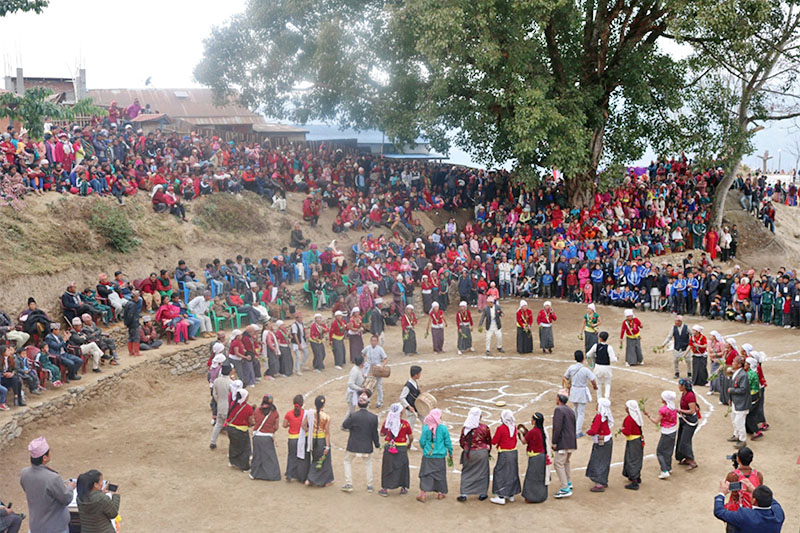This traditional dance symbolizes gratitude to nature and the deities for a bountiful harvest and invokes blessings for prosperity and well-being in the coming year. Held during the transition to the winter season, the dance serves as both a spiritual practice and a cultural celebration.
Sakela Dance, embodies the essence of Udhauli Parva. It is performed in large groups, with men and women forming circles and synchronizing their movements to the rhythmic beats of traditional instruments like the dhol and jhyamta. Each movement in the dance represents elements of nature, such as plowing fields, sowing seeds, and harvesting crops. Through these symbolic gestures, the Kirat people honor their deep connection to the earth and express their thankfulness for its abundance.
The dance is more than just a celebration; it is a way to preserve the rich cultural heritage of the Kirat community. Passed down through generations, Sakela Dance keeps the stories, beliefs, and traditions of the community alive. It also fosters unity, as people from all walks of life come together to participate in the festivities. The collective performance transcends individual differences, reinforcing the bonds of kinship and shared identity.

At the heart of the Sakela Dance lies the worship of Paruhang (the creator) and Sumnima (the mother goddess), deities central to Kirat spirituality. The dance is performed to invoke their blessings for harmony, protection, and a fruitful season ahead. The colorful attire worn during the dance, with men in daura suruwal and women in traditional dresses adorned with jewelry, further enhances its spiritual aura, as every element carries symbolic significance.
Though deeply rooted in Kirat culture, Sakela Dance has become a celebration that transcends boundaries. In urban areas like Kathmandu, the dance is performed in public spaces, allowing people from diverse communities to witness and participate in the festivities. This inclusivity has helped promote awareness and appreciation of the Kirat culture.
Sakela Dance reflects the gratitude, spirituality, and unity of the Kirat people.
Picture Credit- The Himalayan Times, Wikipedia
Also Read